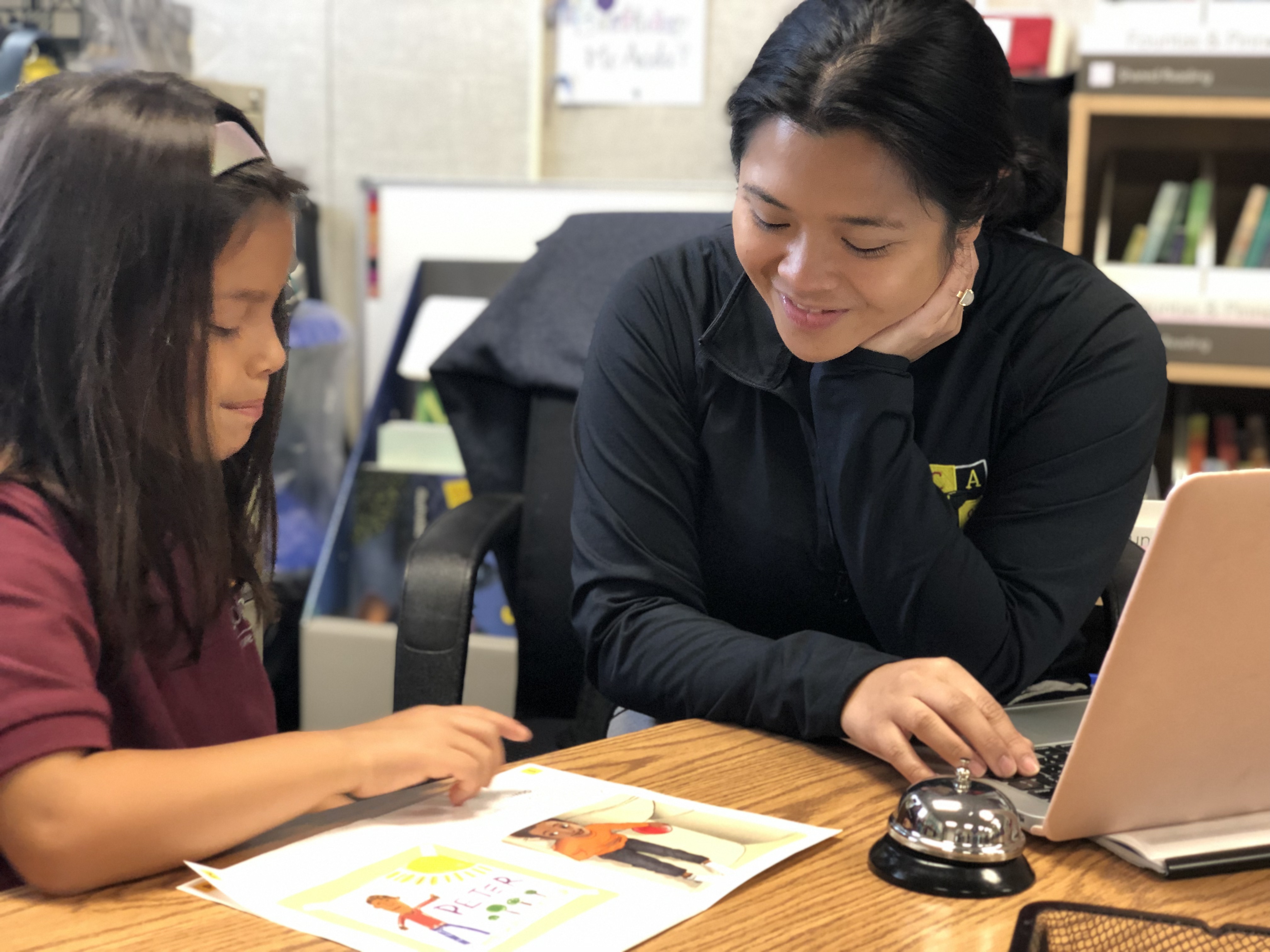
Can you tell us a little bit about yourself? How many years have you been teaching, how long you’ve been at Cornerstone, and your path to education?
I have 10 years of experience in education. This is my 8th year with my own classroom and my 6th year at Alpha: Cornerstone. I was running a music program out of Crenshaw and Watts. My passion was teaching music and I was working with students who didn’t have the means. I always knew that I wanted to give back to my community so I decided to join Teach for America. I was initially placed in New York and was then transferred to the Bay Area.
When I moved here, I became a Kindergarten teacher and I was a HORRIBLE first year teacher. I had no curriculum. My coach was also in her first year of coaching. It was a grassroots experience starting from absolutely nothing. My entire first year was just me trying to keep my head above water. While it was the most difficult year in my teaching tenure, it also taught me so many lessons that I have taken with me.
It wasn’t enough to just come with a plan. It was important to create systems for myself and build a routine that works for my students. I wanted to help my students build independence. My goal was to have my students do the work and consistently that has been my mission statement – build advocacy and independence in my scholars.
Everything I do is in service to my students. Nothing is given. Everything is learned. We build community. We build habits of discussion. Students learn to lead and explain their approach and methods through the process. It’s also about helping them identify their actual feelings so that they can advocate for themselves.
I also believe in giving students the “why”. As educators, we often don’t do enough to build connections between where they are and where they are going. Students need to have the capacity to get to the why, to know how things work together, how one decision and action affects another.
How do you promote a positive culture?
Before anything, students need to feel known. At the beginning of each school year, I get to know my students’ families’ names. I want families to say Ms. Acda is the teacher who knows who I am. A professor in college once told me, “put all your effort into one conversation and a student will see that.”. This has really rung true for me and it is something I practice daily. Whoever I’m speaking to in that moment, they are the most important. You will have my whole, undivided attention when you speak to me because that is what you deserve.
Growing up as a Filipino immigrant, I had duties and responsibilities to my family. They had their own ideal of what success looked like and while we may not have always agreed, I learned to respect their views and still pursue my own passion. A lot of our children here are taught in that way. Part of my job as an educator of color is to teach my students what feelings are, how to identify them, and how to cope with them and express them in a healthy way. We learn what is okay, what is not appropriate, and ultimately how to create boundaries.
What would students say about your class?
They would say they feel safe. That their teacher loves them. It’s not just that my teacher is invested in my success, but that my teacher really cares for me. They would say Ms. Acda does not accept one word answers. They know that I’m going to continue to push their thinking and get to the “why”. They would say that it’s about answering and responding and generating more questions for each other so that they are building upon each other.
Students may also mention my flex seating arrangement. This is always interesting because I typically don’t roll out flex seating until the second half of the year, again, everything is earned.
I introduce it by saying this is your book box. How do you take care of it? How does being organized help your learning? This then translates to their desk and their seat. I let them know that they don’t have to sit at the same desk all day. I talk about how companies like Google have this option for their employees. I explain it as an opportunity to give our bodies a break but continue productivity. We get to explore this option because we have spent the first half of the year building independence and trust in our class community.
I roll out flexible seating one at a time and students must practice and keep a journal. What is that seat doing for their mind and body? Maybe it’s “I love the yoga ball because I can bounce up and down when I need a break.” If the seat doesn’t work for a student, I want them to write that down as well and tell me what can be done to make it better.
It all comes down to mindfulness. We begin each morning with meditation. We scan our bodies and become aware of our thoughts, feelings, and how we want to be. Students take a moment to evaluate “how does my heart feel” and “this is good for me because…”
What keeps you going year after year? Why do you continue to choose Alpha: Cornerstone?
First and foremost, this community itself. I have taught so many siblings. My weekends are filled with birthday parties and events. I have watched my students grow and become bright young women and men. Secondly, the staff. I have the best team in the entire world. Every teacher is doing what I’m doing. We are collaborative and we take care of each other. My principal knows me. She values me as a person and believes in me. My coaches are supportive and are great about managing my time. Often times, they’re the ones telling me to stop working. This work can be incredibly challenging at times and especially hard during this political climate. It’s just really reassuring to know that they have my back and I will always have theirs.
 Back to all
Back to all


